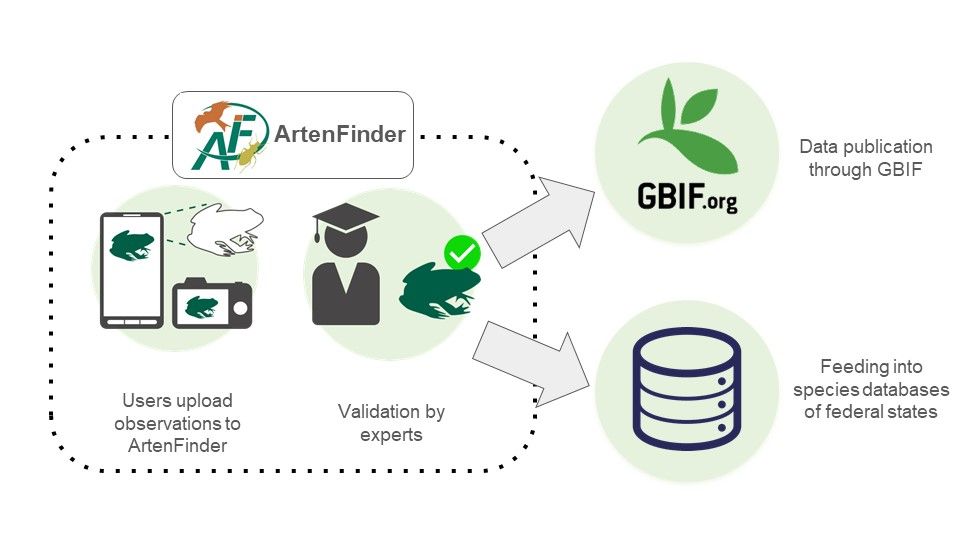
Postdoctoral researcher @Synthesis centre sDiv. Studying BEF-relationships, feedbacks, climate extremes, belowground plant traits
German Centre for Integrative Biodiversity Research; Leibniz Centre for Agricultural Landscape Research; Leipzig University • Ecology and Vegetation Dynamics Studies, Tree-ring climate responses, Plant Water Relations and Carbon Dynamics

🔗 nph.onlinelibrary.wiley.com/doi/10.1111/...
Reposted by Karl Andraczek
Very good advice below. So much COVID nonsense (e.g. 'immunological dark matter') basically came down to a non-identifiable model that hadn't been properly tested.

I tend to think of experiments as special cases of inference, since most of the problems I work on cannot be studied in experiments. But I get that many researchers see experiments as base analogy.
Reposted by Karl Andraczek

#GoBelowground #ExFuMo #Brazil #CamposRupestres #Resilience #buds #regeneration #rhizome #root
@ibotcz.bsky.social @czechacademy.bsky.social
🌎🧪🌳🍁
apply.interfolio.com/176741
Reposted by Malte Jochum, Karl Andraczek

Reposted by Karl Andraczek

Reposted by Maria Paniw, Karl Andraczek

Join our hands-on workshop “Building Near-Term Iterative Forecasting Workflows” at #TIBS2026 – Aarhus, 6 Jan 2026 🌍
We’ll explore how to turn static predictions into dynamic, self-updating forecasts. @paniw.bsky.social
Reposted by Jens‐Christian Svenning, Oliver L. Phillips, Simon L. Lewis , and 19 more Jens‐Christian Svenning, Oliver L. Phillips, Simon L. Lewis, Ana S. L. Rodrigues, Ben Bond‐Lamberty, Mathias Disney, Pieter A. Zuidema, Patrick A. Jansen, Stephen D. Murphy, Tommaso Jucker, Markus P. Eichhorn, Andrew Hacket‐Pain, Ferran Sayol, Darío Martin‐Benito, Shan Kothari, Joan Dudney, Joshua S. Lynn, Jonathan von Oppen, Karl Andraczek, Orlando Schwery, Jonas Trepel, Benjamin Wildermuth



Reposted by Helmut Haberl, Tobías Plieninger, Daniel Müller , and 14 more Helmut Haberl, Tobías Plieninger, Daniel Müller, Helmut Hillebrand, Ana Bastos, Wolfgang Crämer, Dominik Wiedenhofer, Charlotte Streck, Panayiotis G. Dimitrakopoulos, Daniel Huppmann, Ilona M. Otto, Christian Hof, Malte Jochum, Elena D. Concepción, Susanne Lachmuth, Caroline Greiser, Karl Andraczek


"Climate Neutrality Is Europe’s Greatest Economic Opportunity”.
Ahead of the European Council meeting on 23.10.2025,
2,178 scientists urge EU Heads of States & Governments to take ambitious decisions for the 2040 targets.
zenodo.org/records/1739...

🔗 nph.onlinelibrary.wiley.com/doi/10.1111/...

Reposted by Karl Andraczek
👉 @billurbektas.bsky.social et al. shed light on this in an inspiring study: nph.onlinelibrary.wiley.com/doi/10.1111/...

Reposted by Billur Bektaş

👉 @billurbektas.bsky.social et al. shed light on this in an inspiring study: nph.onlinelibrary.wiley.com/doi/10.1111/...

BugNet is a global network studying how invertebrate herbivores and fungal pathogens shape plant diversity & ecosystem functioning worldwide. The paper reports on the methods of the experimental part:
📄 onlinelibrary.wiley.com/doi/10.1002/...
Quantify traits of tree species across the western US to determine how tree populations and forest communities will respond to drought and fire.
plant-traits.net/lab-openings/
Reposted by Richard Shaw, Jill A. Jacobson, Karl Andraczek

Reposted by Michael Barnett, Dorothy Bishop, Ben Bond‐Lamberty , and 12 more Michael Barnett, Dorothy Bishop, Ben Bond‐Lamberty, Simon Roux, Pierre Bataille, Trevor A. Branch, Ewan Carr, Barrett, Brian Weatherson, Wolfgang Huber, Anton Grau Larsen, Juan Ramón, Baptiste Coulmont, Ondřej Mottl, Karl Andraczek
Reposted by Katherine Siegel, Karl Andraczek



Reposted by Karl Andraczek

www.science.org/content/arti...
Reposted by Karl Andraczek, Etienne Lalechère
The paradigm shift we propose in considers multiple trajectories of long-term environmental changes and disturbance events that cumulate and push biodiversity into a quasi-permanent non-equilibrium state.

If you interested in modeling species ranges or biodiversity patters in space & time, our paradigm shift should be of interest to you 😉

The paradigm shift we propose in considers multiple trajectories of long-term environmental changes and disturbance events that cumulate and push biodiversity into a quasi-permanent non-equilibrium state.
Reposted by Karl Andraczek
Reposted by Karl Andraczek

thanks to many volunteers, the #Artenfinder team and #NFDI4Biodiversity Living Atlas - Nature Germany team www.land.gbif.de
@gbif.org @idiv-research.bsky.social @ufz.de
Reposted by Ingo Rohlfing, Patrick S. Forscher, Barrett , and 1 more Ingo Rohlfing, Patrick S. Forscher, Barrett, Karl Andraczek




wjschne.github.io/ggdiagram/ar...



